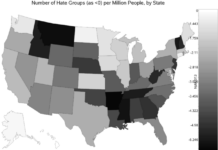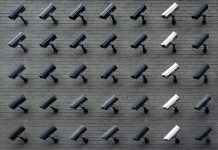Last week, Florida Sen. Bill Nelson, a member of the Armed Services subcommittee on cybersecurity, informed the Tampa Bay Times before a campaign event in Tampa that Russia has already successfully hacked election systems in his state.
Nelson’s announcement naturally prompted consternation and even denial from Florida Department of State Communications Director, Sarah Revell.
But the senator’s report reignites concerns about election tampering.
How susceptible to nefarious activity is the nation’s voting infrastructure?
If Russian trolls are able to get in and mess with us, who else might be able to?
How about an 11-year-old?
During the three-day Def Con security convention this weekend in Las Vegas, Emmett Brewer from Austin, Texas was the quickest of 35 children ages 6 to 17 able to hack into replicas of states’ election results websites.
It took Brewer 10 minutes to change the winning candidate’s name on the faux Florida website to his own and give himself billions of votes.
He wasn’t the only one.
11-year-old Yonatan Lensky infiltrated a mock website for the state of Pennsylvania, and changed Donald Trump’s name to “Mark Albert” and his vote tally to 999,999,999.
Some names were changed to “Bob Da Builder” and “Richard Nixon’s head.”
Some “candidates” were awarded 12 billion votes.
One voting machine was transformed into a jukebox and made to play music and display animations.
This was the second year computer hackers proved U.S. elections systems’ vulnerability to attack.
Jake Braun, an organizer of the convention’s Voting Village, and former Obama White House liaison to the Department of Homeland Security, stated the goal of the exercise was to help officials understand how insecure many current election programs are.
He said:
“We’re identifying for them [Secretaries of State] things that they can do to demonstrate to the public that they’re making elections more secure.”
Ironically, the only secretary of state to attend the event was California Secretary of State, Alex Padilla.
He said in a news conference on Friday:
“We’re still a little traumatized by the headlines from last year’s conference — ‘Voting systems hacked, voting systems hacked, voting systems hacked.’ If there’s [sic] distinctions between what’s happening downstairs and real-world conditions, that doesn’t mean there’s nothing to learn from a meeting like this, but it does mean let’s be informed about what the takeaways are.”
Three weeks ago, Director of National Intelligence, Dan Coats, warned that almost two decades since the September 11, 2001 attacks, “warning lights are blinking red again” for a devastating cyber assault on critical U.S. infrastructure.
Six months ago, Department of Homeland Security (DHS) head of cybersecurity, Jeanette Manfra, confirmed Russia officially penetrated several states’ voter rolls during the 2016 election
But we don’t need Russia to break into our voting machines.
We’re doing a pretty effective job of disenfranchising voters on our own.
Ten years ago the Republican party was licking its wounds after the country elected its first African American president and Democrats controlled both houses of Congress.
So Republicans came up with a strategy: concentrate on 16 states and gerrymander them so badly Democrats have little to no mathematical chance of winning in the 2010 mid-term elections.
But there was another, more insidious strategy.
Republicans knew they couldn’t come right out and criminalize voting, so they devised ways to make casting ballots harder, more inconvenient, frustrating, hoping people would stay home rather than go through all the trouble to practice their civic duty.
That’s when the term “voter fraud” started circulating around right-wing media. Simply accuse random people (mostly immigrants) of voting illegally, and enough “patriots” would rise up in an altruistic fervor to fortify the most fundamental of democratic institutions against those who seek to denigrate it. Some (Republican) states began instituting “voter I.D.” laws, requiring birth certificates, drivers’ licenses, passports, for the right to vote. After all, minorities vote primarily for Democrats. If they are to preserve their hegemony, Republicans must take evasive measures.
Voter fraud, however, is a myth.
Voter suppression is very much alive in America, and Republican states are engaging in it in order to purge the voting roles.
We needn’t look further than Kansas, where the current Republican gubernatorial candidate and Secretary of State, Kris Kobach, masterminded the “Interstate Voter Registration Crosscheck Program.”
In 2013, Kobach boasted his Crosscheck system uncovered 697,537 “potential duplicate voters” in fifteen states. Those “potential duplicate voters” are listed by first and last names only on the supposition they are running around from state to state on election day casting multiple ballots. Everyone with that first and last name is kicked off subsequent nationwide voter roles irrespective of other identifying information, such as Social Security numbers, addresses, or birth dates.
Investigative reporter Greg Palast, in his Rolling Stone piece “The G.O.P.’s Stealth War Against Voters,” said:
“The Crosscheck list disproportionately threatens solid Democratic constituencies: young, black, Hispanic and Asian-American voters – with some of the biggest possible purges underway in Ohio and North Carolina, two crucial swing states with tight Senate races.”
According to Palast’s data, the 2016 presidential election produced the following results:
Trump victory margin in Michigan: 13,107
Michigan Crosscheck purge list: 449,922
Trump victory margin in Arizona: 85,257
Arizona Crosscheck purge list: 270,824
Trump victory margin in North Carolina: 177,008
North Carolina Crosscheck purge list: 589,393
In June, the Supreme Court ramped up Republican voter suppression tactics when it decided in a split 5-4 decision along partisan lines to permit Ohio’s system for stripping voters from the rolls to proceed.
So, what do we do?
We vote.
We vote in numbers this country has never seen, because, even if some are being purged, if those who don’t usually turn out on Election Day show up, we have a chance to bring the so-called “blue wave” that will flip Congress and local legislatures.
Check your registration status today.
Apathy is not an option.
Image credit: Richmond Times-Dispatch





